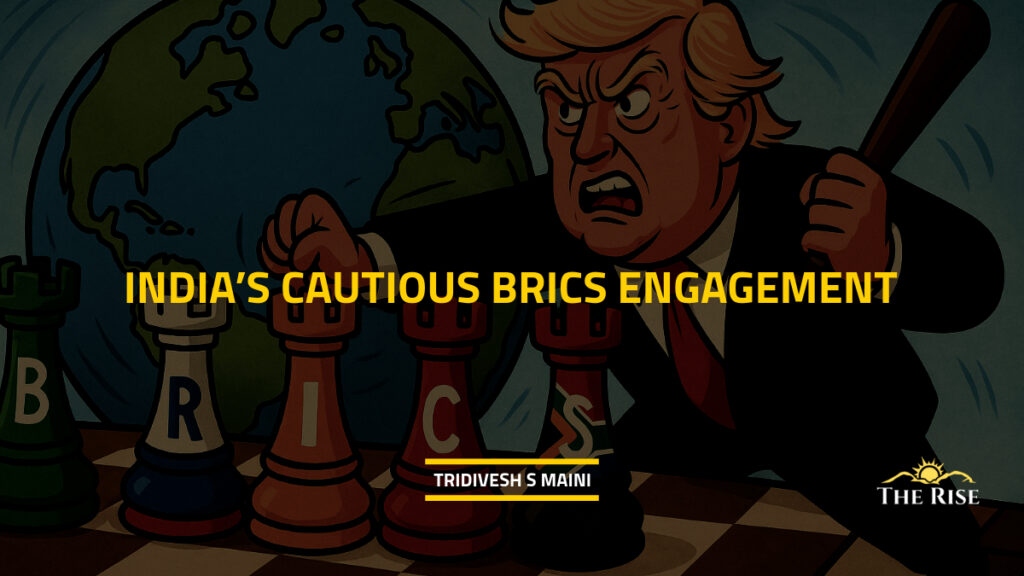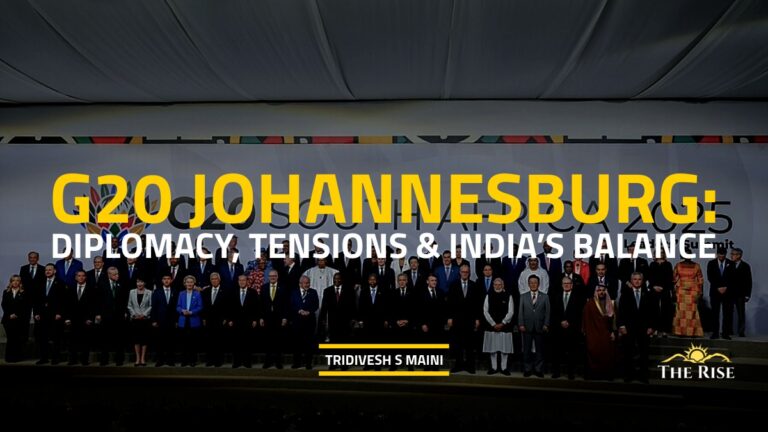India, while understanding the limitations of BRICS, is likely to use the organisation for exploring economic synergies with other members of the organisation. Additionally, India is expected to raise concerns relevant to the Global South in the upcoming BRICS summit, but would do so with measured caution.
While speaking at the US-India Strategic Partnership Forum (USISPF) Leadership Summit — on June 2, 2025 — US Secretary of Commerce, Howard Lutnick, underscored the point that India’s purchase of Russian arms as well as its involvement in the BRICS+ organisation “rubbed” the US the wrong way.
A few months earlier, during an interaction with an Indian media channel, the US Commerce Secretary had said: ‘India is the ‘I’ in BRICS, trying to create a currency to replace the dollar as the global economic currency. These kinds of things do not create the love and affection that we really, deeply feel towards India.’
It would be pertinent to point out that US President Donald Trump had issued threats to countries going in for ‘de-dollarisation’ – trade in local currencies, especially BRICS+ nations. The US President had said that 100 per cent tariffs would be imposed on BRICS nations if attempts are made to introduce an alternative currency to the US Dollar.
Timing of the BRICS Summit and the current geopolitical situation
The upcoming BRICS Summit, scheduled to be held in Rio de Janeiro in July 2025, comes at a particularly significant juncture. It will take place less than three months after the horrific Pakistan-sponsored terror attack in Pahalgam, Jammu and Kashmir, which claimed the lives of 26 tourists—25 Indian nationals and one Nepali citizen. In response, India launched ‘Operation Sindoor’ on May 7, 2025. This led to heightened tensions between India and Pakistan, lasting from May 7 to May 10. The standoff concluded with both nations agreeing to a ceasefire on May 10, 2025.
Also Read: BRICS+ Expansion and Strategic Realignment
Secondly, India-China relations, which had shown signs of improvement until April 2025, have once again deteriorated following the recent India-Pakistan conflict. Tensions flared further after reports emerged that China had provided military and satellite support to Pakistan during the standoff. Simultaneously, India expressed discomfort over former U.S. President Donald Trump’s claim that it was American intervention that brought the conflict to an end.
India’s External Affairs Minister, S. Jaishankar, clarified that India and Pakistan had directly negotiated what he described as an “understanding,” rather than a formal ceasefire.
Late last month, India’s Foreign Secretary Vikram Misri met with U.S. Deputy Secretary of State Christopher Landau. Both sides reaffirmed their convergence on key strategic issues and underscored the strength of their bilateral relationship, along with a shared commitment to ensuring ‘regional stability’.
India’s approach towards BRICS+ in recent years
India’s approach towards BRICS has been lukewarm ever since the deterioration of ties with China in recent years. While highlighting the importance of BRICS in the context of the Global South and pitching for closer cooperation, PM Narendra Modi during the last BRICS Summit, in October 2024, said, ‘We must be careful to ensure that this organization does not acquire the image of one that is trying to replace global institutions.’
Modi’s meeting with Chinese President Xi Jinping, on the sidelines of the BRICS summit in 2024, played a crucial role in paving the way for a thaw between both countries, according to many commentators.
India’s approach towards a common currency and De-dollarisation
While India has opposed the idea of a BRICS common currency, it has consistently advocated for the use of local currencies in trade among member countries. In response to U.S. President Donald Trump’s warnings to nations pursuing de-dollarisation, India has reiterated that its efforts are not intended to undermine the significance of the U.S. Dollar in the global financial system.
Trilateral talks between India, Russia, and China
Russia recently proposed the revival of trilateral talks between India, China, and Russia. Russia’s Foreign Minister Sergey Lavrov said, “I would like to confirm our genuine interest in the earliest resumption of the work within the format of the troika — Russia, India, China — which was established many years ago on the initiative of (ex-Russian prime minister) Yevgeny Primakov.”
India is also likely to highlight the issue of terrorism during the upcoming BRICS Summit – it remains to be seen if India can build consensus in favour of a joint statement on terrorism. In 2024, PM Modi had also called for “firm support” from other members in countering terrorism.
In conclusion, India, while understanding the limitations of BRICS, is likely to use the organisation for exploring economic synergies with other members of the organisation. Additionally, India is expected to raise concerns relevant to the Global South, though it will do so with measured caution.
Disclaimer: The views expressed in this article are of the author solely. TheRise.co.in neither endorses nor is responsible for them. Reproducing this content without permission is prohibited.
About the author
Tridivesh Singh Maini is a New Delhi-based Policy Analyst. He is faculty member of OP Jindal Global University, Sonepat, Haryana.











Pingback: ASEAN & BRICS: Opportunities and Roadblocks - TheRise.co.in
Pingback: Future of Global Power Politics - TheRise.co.in